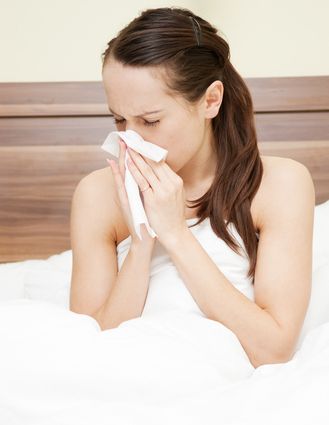This new virus was first detected in people in the United States in April 2009. This virus is spreading from person-to-person worldwide, probably in much the same way that regular seasonal influenza viruses spread.
Dr. Rachel Herlihy provides information on what you need to know about seasonal and H1N1 Flu.
How does 2009 H1N1 virus spread?
Spread of 2009 H1N1 virus is thought to occur in the same way that seasonal flu spreads. Flu viruses are spread mainly from person to person through coughing or sneezing by people with influenza. Sometimes people may become infected by touching something – such as a surface or object – with flu viruses on it and then touching their mouth or nose.
What are the signs and symptoms of this virus in people?
The symptoms of 2009 H1N1 flu virus in people include fever, cough, sore throat, runny or stuffy nose, body aches, headache, chills and fatigue. Some people may have vomiting and diarrhea. People may be infected with the flu, including 2009 H1N1 and have respiratory symptoms without a fever. Severe illnesses and death has occurred as a result of illness associated with this virus.
How severe is illness associated with 2009 H1N1 flu virus?
Illness with the new H1N1 virus has ranged from mild to severe. While most people who have been sick have recovered without needing medical treatment, hospitalizations and deaths from infection with this virus have occurred.
In seasonal flu, certain people are at “high risk” of serious complications. This includes people 65 years and older, children younger than five years old, pregnant women, and people of any age with certain chronic medical conditions. About 70 percent of people who have been hospitalized with this 2009 H1N1 virus have had one or more medical conditions previously recognized as placing people at “high risk” of serious seasonal flu-related complications. This includes pregnancy, diabetes, heart disease, asthma and kidney disease.
One thing that appears to be different from seasonal influenza is that adults older than 64 years do not yet appear to be at increased risk of 2009 H1N1-related complications thus far. CDC laboratory studies have shown that no children and very few adults younger than 60 years old have existing antibody to 2009 H1N1 flu virus; however, about one-third of adults older than 60 may have antibodies against this virus.
Take these everyday steps to protect your health:
• Cover your nose and mouth with a tissue when you cough or sneeze. Throw the tissue in the trash after you use it.
• Wash your hands often with soap and water. If soap and water are not available, use an alcohol-based hand rub.*
• Avoid touching your eyes, nose or mouth. Germs spread this way.
• Try to avoid close contact with sick people.
• If you are sick with flu-like illness, CDC recommends that you stay home for at least 24 hours after your fever is gone except to get medical care or for other necessities. (Your fever should be gone without the use of a fever-reducing medicine.) Keep away from others as much as possible to keep from making others sick.
Other important actions that you can take are:• Follow public health advice regarding school closures, avoiding crowds and other social distancing measures.
• Be prepared in case you get sick and need to stay home for a week or so; a supply of over-the-counter medicines, alcohol-based hand rubs (for when soap and water are not available), tissues and other related items could help you to avoid the need to make trips out in public while you are sick and contagious.
• IF YOU’RE NORMALLY HEALTHY
– take simple precautions (wash hands, cough in arm, dispose of tissue, etc)
– if sick avoid contact with others
– stay home until fever has been gone for over 24 hours
– if symptoms are mild, avoid going to doctor’s office
– Relenza and Tamiflu should be used only for more severely ill or high risk
– unless severe symptoms, ride out disease or call doctor
– see doctor only if not improving, or if you improve, then get worse• Once H1N1 Vaccine arrives in state who will be getting those vaccines first ?
State will initially receive 316,000 doses for high risk first• IF YOU’RE HIGH PRIORITY (those to be vaccinated first)
Pregnant women
Health care workers
Those who live or care for children 6 months and younger
People 6 months to 24 yrs
People 25-64 with underlying health conditions that may be at higher risk for complications
… then 65 and older and normally healthy 25-64, who are least risky
Information for this article has been provided by the Centers for Disease Control and Utah Department of Health. For more information, check out the Utah State website at www.immunize-utah.org for specific flu shot clinic information. Also check with your personal health care provider for indications for your own family.















Add comment